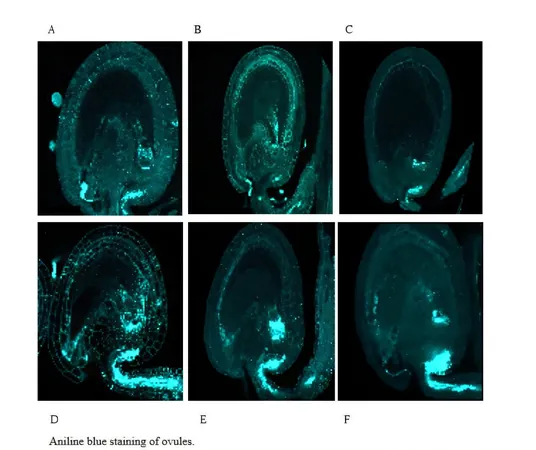
Groundbreaking Discovery: New Plant Tissue Unveils Secrets to Boosting Crop Yields
2025-04-10
Author: Ming
A Revolutionary Plant Tissue Uncovered
In a stunning breakthrough, a research team at Nagoya University, Japan, has unveiled a brand-new plant tissue vital for seed formation—marking the first discovery of its kind in 160 years! This astonishing find not only opens the door to a host of fresh research opportunities but has already shown practical benefits, including enhanced yields in staple crops like rice.
Unraveling the Mysteries of Seed Formation
Since 2005, scientists have understood that fertilization plays a crucial role in how the seed body, or hypocotyl, receives nutrients from the plant. However, the mechanism through which plants detect successful fertilization has largely remained a mystery, a gap that this new discovery aims to fill.
The Accidental Discovery That Changed Everything
Led by researchers Ryushiro Kasahara and Michitaka Nodaguchi, this groundbreaking discovery was made unexpectedly during routine experimentation. While staining seeds to observe callose—a waxy substance linked to fertilization—Kasahara stumbled upon an extraordinary revelation. He noticed signals emanating from an unexpected area on the seeds, leading them to investigate further.
Introducing the 'Kasahara Gateway'
What emerged from their research is a unique, rabbit-shaped tissue structure, aptly named the 'Kasahara Gateway.' This tissue acts as a critical checkpoint in the fertilization process—it determines whether nutrients can flow into the seed or not.
The Gateway's Dual States: Open vs. Closed
The researchers identified two operational states of the gateway: the 'closed state,' where callose blocks nutrient flow into unfertilized seeds, and the 'open state,' which allows nutrients to enter post-fertilization. This discovery could revolutionize crop production by minimizing resource waste on non-viable seeds.
Unlocking Genetic Potential for Enhanced Yields
Delving deeper, the team pinpointed a gene named AtBG_ppap that plays a crucial role in this process. By genetically modifying hypocotyls to overexpress AtBG_ppap, they achieved a remarkable feat: a permanent open state of the gateway, leading to a staggering increase in nutrient uptake.
A Significant Impact on Agriculture
Their experiments revealed that rice seeds could grow 9% larger, and some other species saw enhancements of up to 16.5%! These results could herald a new era in plant breeding and agricultural productivity.
Revolutionizing Our Understanding of Plant Evolution
Kasahara also emphasizes that this discovery offers profound insights into plant evolution, particularly in explaining the dominance of flowering plants in today's ecosystems. This exciting research marks a pivotal step forward in maximizing agricultural yields and understanding plant biology.


 Brasil (PT)
Brasil (PT)
 Canada (EN)
Canada (EN)
 Chile (ES)
Chile (ES)
 Česko (CS)
Česko (CS)
 대한민국 (KO)
대한민국 (KO)
 España (ES)
España (ES)
 France (FR)
France (FR)
 Hong Kong (EN)
Hong Kong (EN)
 Italia (IT)
Italia (IT)
 日本 (JA)
日本 (JA)
 Magyarország (HU)
Magyarország (HU)
 Norge (NO)
Norge (NO)
 Polska (PL)
Polska (PL)
 Schweiz (DE)
Schweiz (DE)
 Singapore (EN)
Singapore (EN)
 Sverige (SV)
Sverige (SV)
 Suomi (FI)
Suomi (FI)
 Türkiye (TR)
Türkiye (TR)
 الإمارات العربية المتحدة (AR)
الإمارات العربية المتحدة (AR)